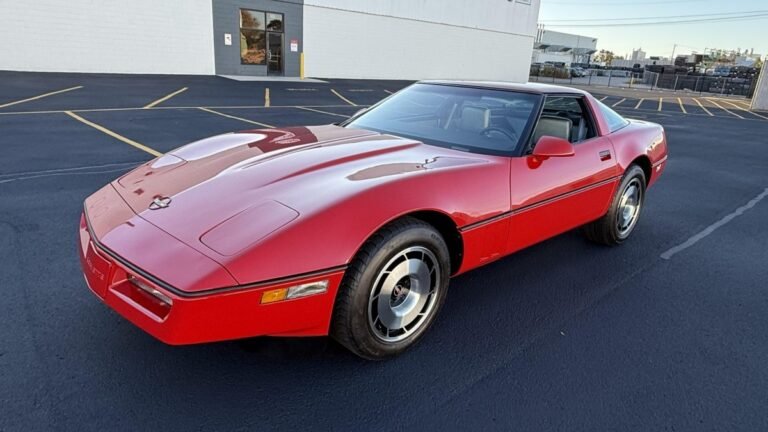
Corvette Middle East Sales Sets Record
The Chevrolet Corvette just posted its strongest Middle East monthly sales performance since 2015, setting a record in the process. For a sports car born in Detroit, this success story represents more than just impressive numbers. It signals a fundamental shift in how international buyers view American performance cars in markets traditionally dominated by European exotics.
The timing couldn’t be more significant. While domestic Corvette sales have faced headwinds, with Q2 2025 numbers dropping 38 percent to 5,801 units in the United States, the Middle East has emerged as an unexpected bright spot for General Motors’ flagship sports car.
Chevrolet
Breaking Through Cultural Preferences
The C8 generation’s mid-engine architecture has fundamentally changed how Middle Eastern buyers perceive the Corvette. Previously viewed as a muscle car more suited for American highways than sophisticated international tastes, the current generation’s Ferrari-inspired layout and supercar performance credentials have opened doors in markets that once dismissed Detroit’s offerings. Not to mention, the range of Corvettes in the form of the Stingray, E-Ray and Z06, on offer at various price points.
In the UAE, the Corvette range starts at AED 340,900 (approximately $93,000), representing a significant premium over the $70,000 base price in the United States. Despite this markup, regional buyers have embraced the value proposition. The Corvette delivers legitimate supercar performance at a fraction of the cost of European competitors, even with import duties and regional pricing adjustments factored in.
Chevrolet
Corvette Appeal Widening In The Middle East
The diversification of the Corvette customer base reflects broader changes in the Middle East’s automotive preferences. Traditional buyers focused primarily on luxury sedans and SUVs, but younger buyers and entrepreneurs, for example, are increasingly drawn to performance vehicles. The Corvette’s combination of exotic design, technology, track-ready capability, and everyday usability appeals to buyers who want to both look the part and drive it.
This regional success story also highlights GM’s strategic expansion efforts. While the company faces challenges in traditional markets, emerging regions like the Middle East offer opportunities for growth, particularly with vehicles that can compete directly with established European performance brands at more accessible prices.


